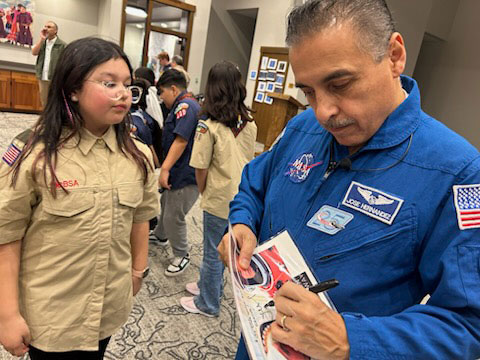
‘Cattlegate’ Moves Forward: What About Those Cows As Easterdays, Tyson Battle Over Herd Of 54,000
READ ON
In southeast Washington, the welfare of more than 50,000 head of cattle is worrying Tyson Fresh Meats.
Can the herd continue to be fed and cared for while the company set up to guard over them, Easterday Ranches, files for federal bankruptcy?
“The immediate problem is the remaining 54,000 cattle, which have to be fed, managed, and grown to maturity for delivery to Plaintiff’s processing plant [Tyson],” Tyson said in a superior court lawsuit filed last month, asking for a neutral third party to take over. “… financial distress (including insufficient operating cash and potential imminent dissipation of valuable assets), poses a significant and material risk to the health and value of the cattle. Moreover, there is real and significant risk to the public if proper care for the large herd is not maintained.”
In a hearing Thursday, Tyson lawyers said they want to move more than 3,000 young cattle off the Easterday lot as soon as this weekend, and about 12,000 young animals total in the near future. The remaining 41,000 older cattle would stay on the Easterday lot and be moved to slaughter as they grow ready through this summer.
Before Tyson filed suit against Easterday Ranches on Jan. 25, the relationship worked this way: Easterday Ranches would buy cattle for Tyson, raise and feed them, and charge Tyson. But then, Easterday Ranches allegedly made up 200,000 head of cattle on paper and charged Tyson for phantom cattle feed and care for years. In its lawsuit against Easterday Ranches, Tyson claimed $225 million dollars in lost beef and feed.
Cattle custody?
With the Easterday bankruptcy, Tyson has asked a court to appoint a trustee, or neutral caretaker, for the property to protect the valuable assets: cattle.
“Debtor’s management [Easterdays], however constituted, cannot be trusted to keep the interests of creditors of this estate rather than other entities owned by the Easterday family, at heart,” Tyson said in its motion to appoint a bankruptcy trustee.
It’s not clear who is actually feeding and caring for the animals — Tyson, Easterday or the company AgriBeef, which now owns the land where the animals are kept.
But in a Feb. 3 hearing, lawyers for Easterday Ranches said that Easterday would never allow the cattle to wither away and die for lack of care and feed. In the same hearing, Tyson said it would wire $1.75 million for immediate feeding.
On Jan. 22, days before Tyson filed its lawsuit, Easterday Ranches sold its feedlot called the North Lot in Franklin County. It was a quick-turn deal for $16 million, selling to AgriBeef, a meat-cutting competitor of Tyson.
AgriBeef spokesman Jay Theiler says there’s no question the cattle belong to Tyson, even though his company now owns the frosty ground on which the cattle stand and sleep.
Theiler did not respond to additional questions from the Northwest News Network.
There are now 53,000 cattle left, as 1,000 have already been “delivered for harvest,” Tyson spokesman Gary Mickelson said in an email. “…Tyson is keenly focused on the health and wellbeing of the cattle that remain at Easterday Ranches.”
The company says in its motion, “Tyson has recently determined that the most efficient means of dealing with its 53,000 cattle currently on Debtor’s [Easterdays] feedlots is to leave the more mature cattle on the Easterday Ranches properties and move the younger cattle off the Easterday Ranches properties. This should allow a cessation of business at the Easterday Ranches feedlots and grow yards [pens for cattle] by the end of June.”
Tyson, AgriBeef and Easterday have not responded to requests for additional information about who is taking care of the cattle.
Tyson vs. Easterday Timeline:
- Early December – Discovery: Tyson said it found out about a “missing” 200,000 fake head of cattle (presumably Easterday);
- Dec 10 – Tragedy: Family patriarch Gale Easterday dies in a head-on collision with an Easterday semi-truck in Pasco;
- Jan 22 – Sale: Easterday Ranches records the sale of its “North Lot” property;
- Jan 25 – Suit: Tyson Fresh Meats files suit in Franklin County Superior Court against Easterday Ranches;
- Feb 2 – Bankruptcy: Easterday Ranches files bankruptcy;
- Feb 8 – Bankruptcy: Easterday Farms files bankruptcy;
- Feb 8 – Motion for trustee: Tyson asks federal court for a trustee to take over Easterday Ranches.
“A lot of moving parts”
The Washington state Department of Agriculture says it’s had no calls of concern for animal welfare at the North Lot, or other Easterday properties.
And there have been no reports of the cattle running out of food.
To keep a mega-feedlot rolling, a lot of feed would have to funnel into the yard from a complex web of sources throughout the Columbia Basin and across the country.
“There are a lot of moving parts in a feedlot,” according to Frank Mitloehner, a professor and expert in the environmental management of cattle at the University of California, Davis. “If it’s moving well, it’s like a well-oiled machine. Everything works. The feedmill knows what ingredients are needed, they know how to mix the ration. You have a well-trained veterinary team. You have pen riders that know the animals,” Mitloehner said. “If all of a sudden the entire management is gone, then you have to replace the team in a hurry.”
A young-adult steer of about 18 months could eat about 22 to 26 pounds of dry feed a day, and drink about 5 to 8 gallons a day, according to Galen Erickson, a University of Nebraska nutritionist who focuses on feedlot nutrition.
To keep up with 53,000 hungry munchers, the ranch would have to take deliveries almost daily: piles of wheat, corn or barley; stacks of hay and additional supplements like calcium and potassium — nearly 690 tons of dry feed a day.
And feedlots take many hands.
“An old rule of thumb is you need about one person for about every 1,000 head [of animals],” Erickson says. “So you might need about 50 to 75 people total to care for those animals — and that includes weekends and holidays.”
According to the bankruptcy court hearing Thursday, Easterday Ranches and Easterday Farms employ about 400 people.
“Dark cutters”
Tyson is concerned about the ability of Easterday Ranches to pay for feed and care, according to court documents.
One current creditor of Easterday Ranches is Tri-Cities Grain, which is owed $106,000, according to bankruptcy documents filed by Easterday Ranches.
And according to court documents filed by Tyson, Easterday Ranches paid family members and their related company, Easterday Farms, about $7 million for feed and hay out of the proceeds from the sale of the North Lot to AgriBeef, according to the Tyson court documents.
Mitloehner, from UC Davis, says if the animals are stressed, Tyson would literally see the stress in the meat, because it would have less marbling than expected or be a darker color, known as “dark cutters.”
“If the animals were not being taken care of properly, there would be health issues in the animals,” he says. “Animals that would normally gain 3 to 4 pounds a day would gain nothing per day or lose weight. When you run a feedlot like this you can predict to a decimal of how these animals perform,” he said.
Related Stories:

Controversial mega-dairy and farm under fresh scrutiny by Oregon officials
This photo from a Oregon Department of Agriculture report shows water runoff on a field. Runoff events, along with fertilizer leaks, have incurred violations for Easterday Dairy. (Courtesy: Oregon Department

Blue Christmas: Cody Easterday will likely spend his Christmas in federal prison
LISTEN (Runtime: 1:04) READ A big-time Northwest rancher has snatched himself a last two-week extension of freedom, before he goes into federal prison. Cody Easterday was due to report to

Cody Easterday sentenced to 11 years in prison for cattle fraud scam
The sentence that came down for Cody Easterday Tuesday concludes one of the biggest cattle rustling cases in the history of the West.
















